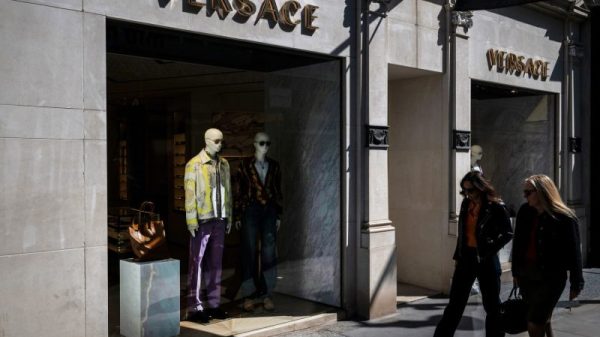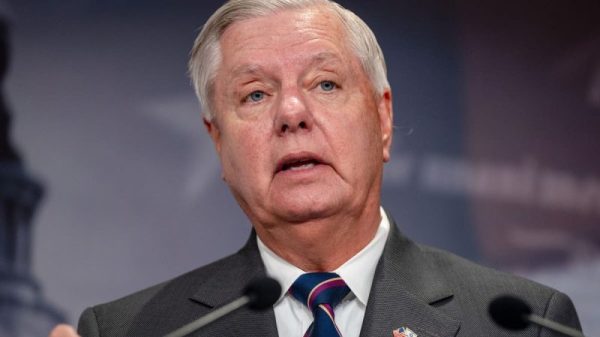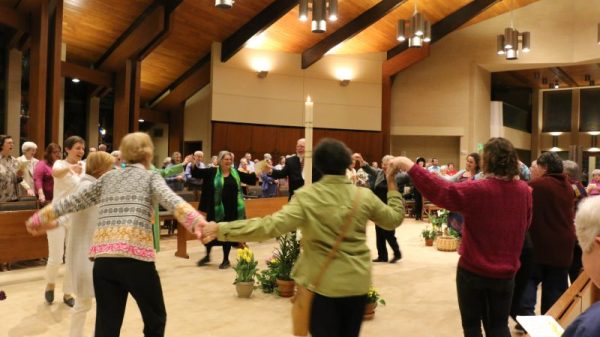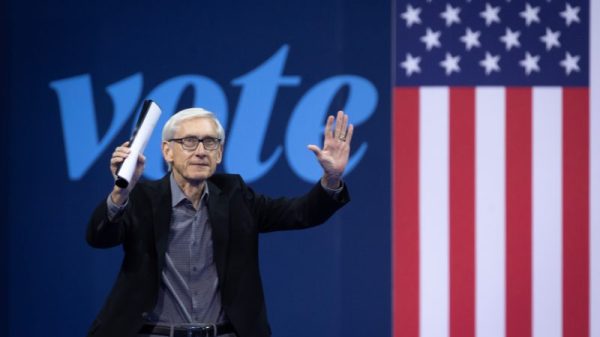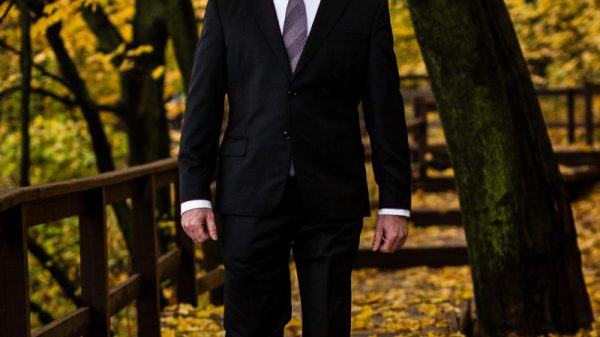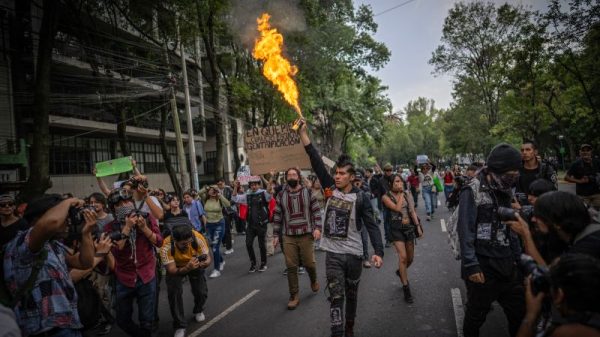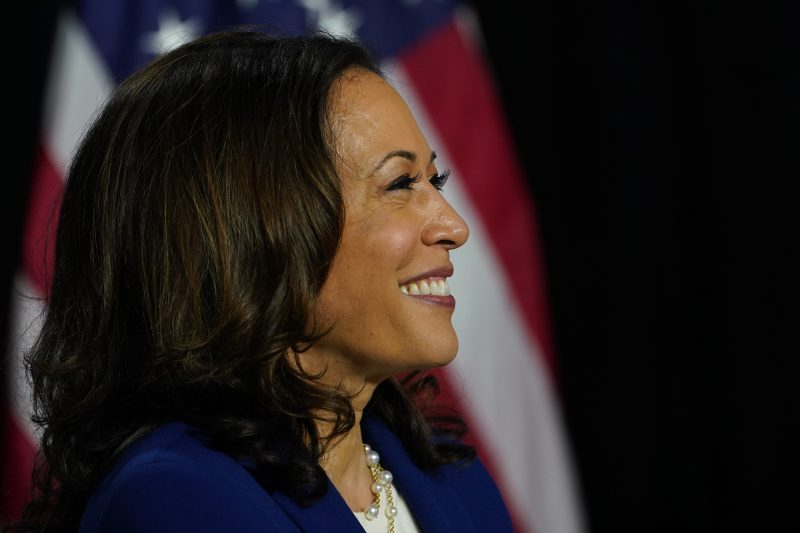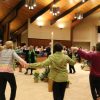Early one morning in September 1970, 5-year-old Kamala Harris walked to the corner of her street to wait for a school bus that would take her up the hills and into the Whiter, wealthier part of Berkeley, Calif.
She didn’t realize it until later, but Berkeley was making history as one of the few places to voluntarily desegregate its schools, doing on its own what other communities were fighting against in the courts and in the streets. Berkeley’s program wasn’t ordered by a judge, but created by people living there who believed in the promise of shared community. And unlike in some other busing communities, the Berkeley program went both ways: Black students were bused to mostly White neighborhoods, and vice versa, so Harris experienced diversity both close to home and away from it.
“Looking at the photo of my first-grade class reminds me of how wonderful it was to grow up in such a diverse environment,” Harris wrote in her 2019 memoir, “The Truths We Hold.” “Because the students came from all over the area, we were a varied bunch; some grew up in public housing and others were the children of professors.”
Children who participated in the program were forever changed, according to interviews with about a dozen people who, like Harris, were bused in Berkeley in the early to mid-1970s. The period shaped their worldviews, and some of Harris’s childhood friends and classmates say the program was the reason they have felt comfortable in diverse environments ever since. The desegregation program also was hard for many students, with some describing fights and bullying between students of different races and economic statuses and schools that did little to help them work through the tensions.
The result: Busing exposed children in Berkeley to both the hope for an America that can rise above racial strife and how hard it is to achieve it.
“It really helped mold the person I am today,” said Michele Lewis, a Black woman who like Harris was bused from her home in the flatlands of Berkeley to an elementary school in the hills. She developed a multiracial group of friends there that she maintains to this day, more than 50 years later, and she said the experience has made her better at her work in human resources.
But others described stress, particularly in grades four to six, when White students from the hills were bused to schools in the flats. “Some of the kids were really rough. They would scare you and corner you,” said Geoffrey Prenter, who is of Japanese and Irish heritage and was in Harris’s fifth-grade class. He said that he had many positive interactions and experiences, but that as children got older, differences in race and class became more obvious and “there was friction.” Some White students may have been snobby, offending less privileged students of color, he said, who expressed their anger through verbal or physical aggression.
If elected, Harris would be the first president to personally experience school desegregation and busing — one of the most tumultuous and important chapters of American history. By contrast, in the 1950s, former president Donald Trump attended a private school in Queens that did not admit its first Black student until the late 1960s, a school official said.
A Harris spokeswoman declined to comment.
Harris’s participation in Berkeley’s integration program was touted by Oprah Winfrey in her speech last week at the Democratic National Convention. But telling the story of school integration carries political complications for the Democratic nominee. It reminds voters that she grew up not just in California but in Berkeley, whose very name is synonymous with liberalism. (In her own convention speech, Harris referred to having lived in the East Bay rather than Berkeley.) And the story of busing first surfaced during a moment of sharp tension with President Joe Biden as they competed for the 2020 Democratic nomination.
Biden, who was beginning his career in politics the year Harris first participated in the Berkeley busing program, sharply opposed court-mandated programs, calling busing “a liberal train wreck” and “an asinine concept,” and at one point suggesting a constitutional amendment to stop it.
Harris drew on this contrast during a 2019 primary debate, invoking his record and contrasting it with her own lived experience.
“There was a little girl in California who was part of the second class to integrate her public schools, and she was bused to school every day, and that little girl was me,” she said during the debate. Biden, who had been staring straight ahead, turned to his left to look directly at Harris as she made it clear the issue was personal.
The exchange was perhaps the biggest moment of Harris’s campaign, which ended before the first primary votes were cast. The tension with Biden faded after he chose her as his running mate. But the experience she invoked lived on in, among other things, a viral photo illustration. Created in 2020 and still circulating, it shows Harris striding forward. Projected on the wall behind her is a shadow in the form of Ruby Bridges, who at age 6 had to be escorted by four federal marshals to integrate her New Orleans school as adults lining the path screamed epithets at her.
The title of the illustration: “That Little Girl Was Me.”
Catching the bus
Harris was born in Oakland, Calif., to a South Asian mother from India and a Black father from Jamaica. After her parents split up, her mother, Shyamala Gopalan Harris, moved Kamala and her younger sister, Maya, to neighboring Berkeley, closer to the research lab where she worked.
Their home, the top floor of a duplex, was in a working- and middle-class area on the west side of Berkeley called the flatlands, the part of town closest to San Francisco Bay. Through redlining policies imposed by lenders and other racist housing practices, people of color had been channeled into this section. In 1970, when the Harrises arrived, the area was mostly Black and immigrant families, many of whom had come to work in the shipyards during World War II. It included the first Black mayor of Berkeley and also a low-income housing development.
Carole Porter, who lived around the corner from Kamala, recalled her as “very confident” and awfully responsible, even as a young girl. She often had to take care of her little sister when their mother worked late, Porter remembered.
“If she didn’t know what she was doing, she looked like she knew what she was doing,” she said. “She didn’t let people mess with her or people she cared about.”
Every morning, Kamala and Carole would meet at the corner between their houses to catch the yellow school bus to first grade at Thousand Oaks Elementary School in the Berkeley hills. Carole’s mother would bake cookies for the bus driver, a way of thanking him for little favors like waiting for her girls if they were running a minute late while getting their hair finished.
The bus rides were fun, Porter said. They would talk, play games and sing songs on the 30- or 40-minute ride to Thousand Oaks. Once there, she said, they both made friends with other girls who lived near the school. Porter remembers being welcomed into the local Girl Scout troop.
Before the desegregation plan, Thousand Oaks was 95 percent White and 2.5 percent Black; the year after it began, it was 53 percent White and 40 percent Black, district documents show.
“I loved Thousand Oaks. I looked forward to getting on the bus,” Porter said.
But her sister Lois Porter said the busing program created resentment among lower-income Black students who saw their new, wealthier classmates had advantages they did not. Some Black kids called the Porter sisters “zebras” because their mother was White and their father Black.
“Busing children up the hill to Thousand Oaks was stressful on everybody. All it did was magnify what you didn’t have or magnified the differences,” she said. “The differences became glaring. They were almost blinding. I can see how those children were angry or resentful or felt different. … We were easy targets.”
Nonetheless, when they were a little older, Carole recalled, her parents made clear to their daughters that in America, they would be seen as Black: They needed to understand that and be proud of it. It was a message that Harris’s mother would deliver to her girls, too.
“My mother understood very well that she was raising two black daughters,” Harris wrote in her memoir. “She knew that her adopted homeland would see Maya and me as black girls, and she was determined to make sure we would grow into confident, proud black women.”
A voluntary plan in Berkeley
In 1954, the Supreme Court ruled in Brown v. Board of Education that racially segregated schools were inherently unequal. Most segregated school districts ignored its directives until forced to act by a court, and in some cases there were angry and even violent protests. The Supreme Court did not endorse busing as a solution to segregation until 1971 and did not mandate desegregation outside the South until 1973.
But in Berkeley, where segregation was driven by housing patterns rather than law, local officials were moved to act on their own, the first sizable city to do so.
“The issue of segregation cannot be postponed. It must be faced. It must be solved,” the superintendent of Berkeley schools wrote in a 1967 report called “Integration: A Plan for Berkeley.” “We will set an example for all the cities of America.”
The roots of the desegregation plan were planted by local Black leaders, who demanded change after a report exposed segregated housing patterns and inequities among schools serving White and Black students.
There was opposition to the integration plan and an effort, which failed, to recall school board members who supported it. As the plan was debated, opponents began leaving Berkeley, typically replaced by newcomers who supported it, bolstering support and building the town’s reputation for liberal politics, said Jef Findley, a local historian at the Berkeley Public Library.
The plan moved forward with desegregation of the district’s two junior highs in 1964 and for elementary schools beginning in fall 1968.
For some, the program was a beacon. The Rev. Martin Luther King Jr. wrote that “hope returned to my soul and spirit” with implementation of the plan. But on the ground, many children had negative experiences, Findley said.
“The adults had planned, planned, planned. They had been doing five or six years of planning and they were gung ho behind the idea — that this is right, this is what we have to do,” he said. “The people who went through it as children — at the initial wave — had a really hard time.”
Busing was broadly unpopular around the country, very much in line with Biden’s views at the time. Polling from this period — and beyond — consistently showed majority support for the Brown decision against separate-but-equal education but widespread opposition to using busing to achieve racial integration.
A 1972 Harris Poll found that only 20 percent of Americans favored “busing schoolchildren to achieve racial balance,” with 73 percent against it. A 1978 Washington Post poll found that 25 percent agreed that “racial integration of the schools should be achieved even if it requires busing.”
Research later found that integration improved the educational attainment and life outcomes for Black students without harming those of White students.
A Washington Post-Ipsos survey this year found that 70 years after the Brown decision, 71 percent of Americans said integration had improved the education of Black students, and 62 percent said it improved the education of White students. Nearly 7 in 10 Americans said more should be done to integrate schools across the nation — a figure that has steadily climbed from 30 percent in 1973, though support is far lower for many of the policies aimed at achieving that, including busing.
A range of experience
As a child, Jenn Rader, who is White, walked to Thousand Oaks Elementary School, her neighborhood school in the Berkeley hills, and saw that some of her classmates, including Harris, arrived by bus. The conversations about the program were everywhere, and they made an impression.
“I remember being aware there was something special about what we were doing,” she said. “I remember being proud being in the Berkeley public schools. I remember we were doing something that people elsewhere in the country weren’t able to do.”
Beginning when they were in fourth grade, in 1973, the buses ran in the other direction: Rader and other White children from the hills were bused to schools in the flatlands, including Franklin Elementary School, where she and Harris had the same fifth-grade teacher. Before desegregation, Franklin was 26 percent White; after, it was 47 percent White.
Rader, now 60, remembers the music teacher at Franklin leading the singing of the civil rights anthem “We Shall Overcome.”
“I can remember her hands on the piano keys,” she said. Rader understood at the time that the song was about racial justice. “I felt fortunate and blessed to be part of that.”
But other students from this era remember negative racial dynamics at Franklin, including bullying and fights.
John Fike, a White man who was bused to Franklin as a child after a few years at a mostly White Catholic school, remembers the excitement of being and learning with “vastly different socioeconomic groups.” His father was involved in the civil rights movement, and Fike said he could see those values expressed in school.
But there was also stress. He recalled seeing a Black child hitting and punching a White child while waiting for the bus after school. In junior high school, the television miniseries “Roots,” a dramatic depiction of the brutalities of slavery, aired and that prompted harassment by some Black students, he said. At one point while outside for lunch or recess, he said, “I remember a kid getting in my face saying, ‘Yeah, your grandfather owned my grandfather.’”
He never was against the integration program, he said, but for a variety of other reasons, he asked his parents to send him back to Catholic school for high school.
After a year, he returned to public school, though many White students did not. Enrollment in the Berkeley schools fell in the years following the integration plan, in part because of a White flight out the district.
Lois Porter, whose older sister, Carole, was close with Harris, also had several negative school experiences.
She recalled an incident at Thousand Oaks where a White girl lied and told her mother that Lois had taken her lunch. Lois later confronted her. “It turns out she just didn’t want to play with me anymore,” she recalled.
The Porter girls were running into so much conflict — mostly the harassment from Black students because they were biracial — that their parents eventually sent them all to Catholic school. Kamala and Maya Harris left Berkeley public schools around the same time, when their mother moved the family to Montreal for a new job.
“Kids would come from the flats, from hard lives, from single-family households, would go to school where kids had a lot of privilege, and they would think they have to fight them because they were so different,” Lois said. “It was a war.”
“I think my mother was like, ‘I don’t want to put my kids through this,’” she added.
Nonetheless, Berkeley graduates of all races — even those who had hard moments — say the experience left them well equipped to live and thrive in a multicultural world.
Harris is among them. During Senate confirmation hearings for Brett M. Kavanaugh, then-Sen. Harris drew a line between that experience and the fact that she was in the Senate to question the Supreme Court nominee.
“I wouldn’t be part of Kavanaugh’s confirmation hearings had Chief Justice [Earl] Warren not been on the Supreme Court to lead the unanimous decision in Brown v. Board,” she wrote on Twitter. “Had someone else been there, I may not have become a U.S. Senator. I know the impact one Justice can have.”
Doris Alkebulan, now 64, who is Black, remembers taking the bus to school, seeing an ice cream shop and a pizza place along the way — things she didn’t have in her neighborhood. But the experience left her optimistic, not resentful, and she said she gained respect and appreciation for other cultures.
Now, as a civil engineer, she said she feels comfortable working with all sorts of people.
“That’s what Kamala brings,” she said. “She can talk to different groups — men, women, nonbinary, Asian, Black, Latino. She’s comfortable with that because she’s seen it all her life.”









